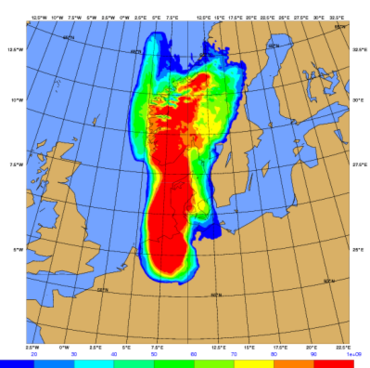Environment
Observing and forecasting the chemical status of the atmosphere and marine environments is vital to maintain healthy ecosystems. Dispersion of hazardous materials such as radioactivity, toxic smoke, volcanic ash, infectious microorganisms, oil spill and conventional air and water pollutants is closely connected with meteorology and oceanography. Thus, timely and accurate predictions of concentration levels of chemicals and nutrients in air and water are of great importance to the responsible authorities striving at limiting the consequences in order to save lives, reduce health consequences and safeguard economical values.
Research and development involve formation of numerical models in addition to improving methods for prediction of transport, diffusion, deposition and transformation of pollutants in air and marine ecosystems. Due to the variety of air- and water-borne tracers, the responsible authorities for emergency preparedness and warning systems involve a number of different agencies and ministries.
 |
The numerical models used at the DMI include DERMA, RIMPUFF, Enviro-HIRLAM,CAMx for air pollution modeling, BSH-dmod for oil drift modeling and ERGOM for marine ecosystem modeling as well as various source models. Employing ensemble techniques with DERMA, uncertainties in dispersion prediction can be assessed (cf. figure).
Due to the impact of air pollution on climate change and concerns on marine ecosystem climate change, there is an intimate connection between the detailed air pollution models and marine ecosystem models for real-time forecasting and the coarser resolution climate models.
Projects
Time series analysis of arctic tropospheric ozone as short lived climate force
Project aims: Investigation of the long time series from Sodankylä, Ny Ålesund, Ittoqqortoormiit and Pituffik to investigate the tropospheric content of ozone to determine a baseline for the arctic tropospheric ozone through the last 25 years. Determination is important if a long term monitoring program is established for short lived climate components.
DMI’s role: Preparation of the time series for which DMI is responsible (Ittoqqortoormiit and Pituffik) and statistical analysis.



